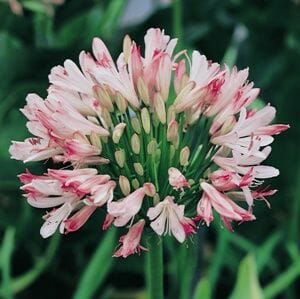Understanding the Art of Agapanthus Treatment: Crucial Actions for Healthy And Balanced Growth and Lively Flowers
In the world of cultivation, the growing of agapanthus stands as a satisfying endeavor for those that look for to nurture these classy blooming plants. From picking the ideal variety to grasping trimming techniques, the trip in the direction of cultivating growing agapanthus plants is multifaceted and holds the crucial to unlocking the complete capacity of these agricultural gems.
:max_bytes(150000):strip_icc()/agapanthus-growing-guide-7368912_hero-a3585e4f9ffe4b99a73c7ad8eb4ebe48.jpg)
Selecting the Right Agapanthus Range

When selecting the right Agapanthus selection for your garden, consider variables such as climate viability, flower color, and development habit. Additionally, take into consideration the climate in your area to make sure the Agapanthus variety you choose can flourish in your details conditions. Understanding the development habit of various Agapanthus varieties is vital for appropriate positioning within your garden.
Perfect Planting Conditions
Considering the ideal ecological demands is crucial for successful Agapanthus farming. Agapanthus flourishes in well-draining dirt with a slightly acidic to neutral pH level. When growing, choose a place that receives complete sunlight to partial shade. In hotter climates, supplying some mid-day color can avoid scorching of the leaves. Agapanthus plants are delicate to chilly temperatures and need to be safeguarded from frost during wintertime months.
To make certain healthy growth and dynamic flowers, plant Agapanthus light bulbs at a deepness of concerning 2-4 inches and space them 8-12 inches apart. Mulching around the base of the plants helps keep moisture and suppresses weed growth.
Watering and Fertilizing Tips
Maintaining correct dampness degrees and supplying necessary nutrients are vital components in the treatment program for Agapanthus plants. It is essential to strike a balance when it comes to sprinkling Agapanthus. These plants favor consistently damp dirt but are susceptible to root rot if overwatered. Throughout the expanding season, water deeply as soon as a week, making certain the dirt is well-draining to avoid waterlogging. In hotter climates or throughout periods of dry spell, more frequent watering may be essential to keep the dirt uniformly moist. However, lower watering in the wintertime to avoid water logged conditions.
Fertilizing Agapanthus is important for advertising healthy and balanced development and prolific blossoms. Apply a well balanced plant food, such as a 10-10-10 formula, in the very early spring as new growth arises. By following these watering and feeding tips, you can ensure your Agapanthus plants prosper and generate vibrant, lasting flowers.
Trimming Methods for Agapanthus
Trimming Agapanthus plants at the appropriate times and with correct techniques is vital for keeping their health and wellness and official source advertising optimum development and flowering. The optimal time to prune Agapanthus is in late winter season or Going Here very early springtime prior to brand-new development arises. Start by removing any type of yellowing or dead fallen leaves near the base of the plant. Cut them as short as feasible without harming the arising shoots.
Deadheading invested blossoms can likewise redirect the plant's power right into generating even more flowers rather than setting seeds. If you want to collect seeds news for propagation, leave some blossoms to dry and fully grown on the plant.
Bear in mind to utilize clean, sharp devices to make exact cuts and lower the danger of presenting illness. Agapanthus. Regular trimming will help keep your Agapanthus looking neat and healthy and balanced while making sure an abundant screen of stunning blooms
Dealing With Usual Parasites and Diseases
After ensuring proper pruning strategies for Agapanthus, it is vital to attend to common parasites and illness that can influence the health and wellness and vigor of these plants. Agapanthus plants are generally durable but can still succumb particular concerns. One common parasite that impacts Agapanthus is the Agapanthus gall midge. This small, orange fly lays its eggs in the foliage, causing distorted growth and blossom buds that stop working to open. To fight this parasite, trim and destroy any kind of afflicted plant components and take into consideration utilizing insecticidal soap.
In addition, Agapanthus plants can suffer from origin rot if they are grown in inadequately draining dirt. By being vigilant and taking punctual activity versus diseases and pests, you can help your Agapanthus plants grow and produce lively blossoms. Agapanthus.

Conclusion
In conclusion, grasping the art of agapanthus care involves choosing the best variety, giving suitable growing conditions, proper watering and feeding, suitable trimming methods, and attending to common pests and conditions. By complying with these necessary actions, you can make certain healthy and balanced growth and dynamic blossoms for your agapanthus plants. Remember to on a regular basis keep an eye on and maintain your plants to advertise their general well-being and long life.
To guarantee healthy development and lively blossoms, plant Agapanthus bulbs at a deepness of regarding 2-4 inches and room them 8-12 inches apart. By complying with these watering and fertilizing pointers, you can ensure your Agapanthus plants thrive and create vivid, lasting flowers.
One usual parasite that impacts Agapanthus is the Agapanthus gall midget. Furthermore, Agapanthus plants can endure from root rot if they are grown in badly draining pipes soil. By complying with these essential steps, you can make certain healthy development and dynamic blossoms for your agapanthus plants.